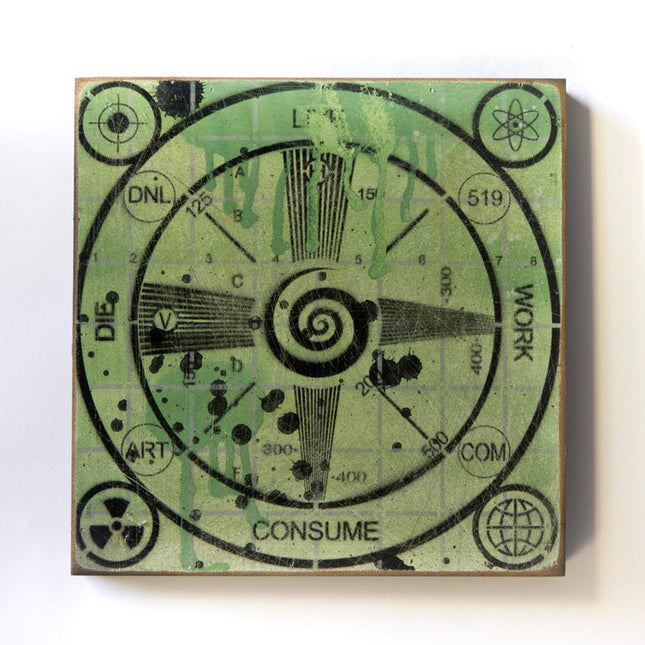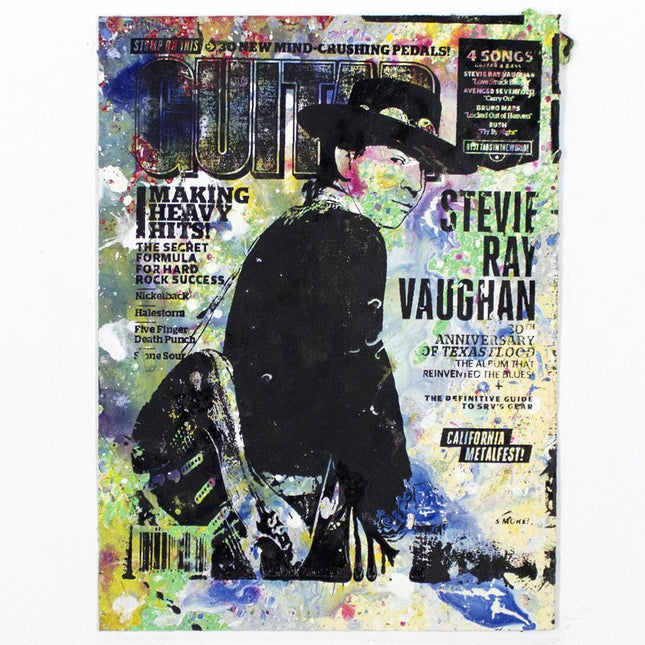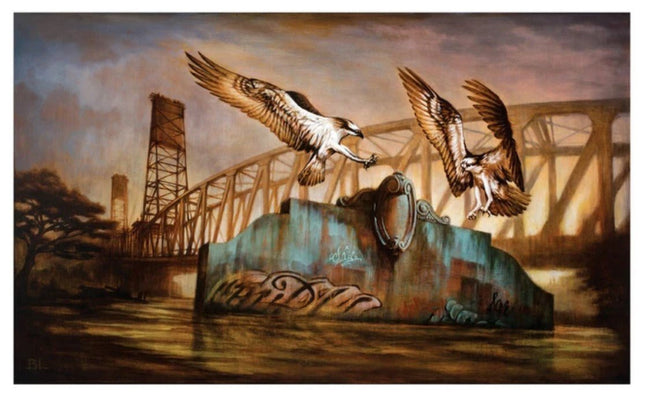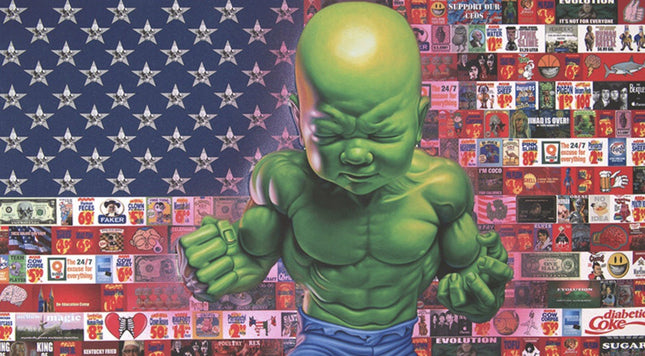
Advertising & Brands
-

Futura 2000- Leonard McGurr FL-001 Marc Jacobs Pointman Monogram 40th by Futura 2000- Leonard McGurr
FL-001 Marc Jacobs Pointman Monogram 40th Anniversary Vinyl by Futura 2000- Leonard McGurr Vinyl Figure Art Toy Sculpture Collectible Artwork by Pop Street Artist. 2024 Marc Jacobs New in Box Limited Edition of 300 Pointman Monogram 40th Anniversary Artwork Size 3.75x12 New In Box Black & White Graffiti Marc Jacobs Fashion Branding 5 Points of Movement. 24A124FUVF "FUTURA (also known as FUTURA2000) is a globally-recognized artist, respected not only for his present-day creations across painting, sculpture, and drawing, but also for his pioneering role in NEW YORK's "SUBWAY SCHOOL" of graffiti in the 1980s. FUTURA and MARC recently synced up as part of a project and scholarship benefitting FREE ARTS NYC in 2022. MARC and FUTURA share a deep, mutual love for art and creative expression, and they are both dedicated to promoting the spirit and ethos of downtown NEW YORK -- the world over. This capsule collection represents MARCs design - expressed through the lens of FUTURAs universe of characters, icons, and kinetic gestures. This is the first collectible vinyl figure collaboration between artist FUTURA and fashion icon MARC JACOBS. This limited special-edition FL-001 "Pointman" was crafted to celebrate the 40th Anniversary of MARC JACOBS’ eponymous fashion house, featuring FUTURA's hand stylized monogram." -Marc Jacobs FL-001 Marc Jacobs Pointman Monogram 40th Anniversary Vinyl Figure by Futura 2000 The FL-001 Marc Jacobs Pointman Monogram 40th Anniversary Vinyl Figure by Futura 2000 is a groundbreaking collaboration between the legendary graffiti artist Leonard McGurr, known as Futura 2000, and iconic fashion designer Marc Jacobs. Released in 2024 to commemorate the 40th anniversary of Marc Jacobs' eponymous fashion house, this limited-edition vinyl figure is a true celebration of art, fashion, and street pop culture. With only 300 pieces available, the black-and-white Pointman sculpture features Futura's signature graffiti-inspired monogram and Marc Jacobs’ bold branding, making it a must-have for collectors and enthusiasts alike. A Fusion of Graffiti Art and High Fashion This special-edition Pointman embodies the seamless blend of street pop art and high fashion. Standing at 12 inches tall, with a base size of 3.75 inches, the figure is adorned in an intricate black-and-white monogram pattern that represents the kinetic energy of Futura's artistic style. The graffiti lettering, applied with meticulous detail, creates a dynamic interplay between fine art and the bold branding of Marc Jacobs. The five points of movement add a sculptural, interactive element to the piece, reinforcing its versatility as both an art object and a collectible design figure. The Vision of Futura 2000 Futura 2000, a pioneer of New York City's graffiti movement, has been celebrated globally for his innovative approach to abstract art and urban expression. Known for transcending traditional graffiti norms, Futura's work often merges bold, futuristic designs with organic, free-flowing shapes. The FL-001 Pointman Monogram figure reflects his ability to adapt his artistry to new mediums while maintaining his distinct style. By collaborating with Marc Jacobs, Futura continues to expand the reach of graffiti artwork, solidifying its place within contemporary art and design. A Monument to Marc Jacobs’ Legacy The Pointman Monogram figure also pays homage to the legacy of Marc Jacobs, who has consistently pushed the boundaries of fashion and design. This collaboration with Futura reflects Jacobs' dedication to blending creative disciplines, celebrating the energy and ethos of downtown New York. The figure not only marks the 40th anniversary of his fashion house but also reinforces his commitment to supporting art and cultural expression, as evidenced by past projects like the Free Arts NYC initiative. A Collector’s Dream Limited to just 300 pieces, the FL-001 Marc Jacobs Pointman Monogram 40th Anniversary Vinyl Figure is a highly coveted collectible. Packaged new in a custom-designed box, the figure’s exclusivity and striking design make it a centerpiece for art and fashion enthusiasts. Its timeless black-and-white palette ensures it stands out in any setting, while its cultural significance adds to its allure as an iconic collectible that bridges graffiti, pop art, and high fashion. This collaboration between Futura 2000 and Marc Jacobs represents a perfect fusion of urban culture and luxury design, making the FL-001 Pointman Monogram figure a true masterpiece of modern art.
$1,750.00
-

Denial- Daniel Bombardier Live. Work. Consume. Die. 49 HPM Wood Stencil Print by Denial- Daniel Bombardier
Live. Work. Consume. Die. 49 Limited Edition Hand-Embellished Stencil, Spray Paint & Acrylic on Cradled Wood by Denial Graffiti Street Artist Modern Pop Art. 2015 Signed Limited Edition of 55 Artwork Size 12x12 "I have a fascination with television test patterns, there is something kind of apocalyptic about them. Like if you were ever seeing one then something terrible was happening. I also put some messaging in this piece that relates to what I believe is the true messaging in most television ads. Live, work, consume, die is really what TV is telling you to do, be it subliminally or not." - Denial Denial has evolved as one the most prominent figures of contemporary pop artists, who nonetheless, continue to stay relevant and is interested in generating thought-provoking commentary. He has a long history of exploring the boundaries of appropriation, which he uses as a means of subverting the value of cultural products, imprinted in the collective memory of the Western civilization. His work, in other words, is inviting the viewer to re-imagine our dystopian society as a way of confronting it, with humor and irony as the biggest tools of the artist.
$2,004.00
-

Bobby Hill Stevie Ray Vaughan Guitar Magazine HPM Acrylic Silkscreen Print by Bobby Hill
Stevie Ray Vaughan Guitar Magazine Limited Edition Hand-Embellished Mixed Media Screen Print on 200lbs Heavyweight Paper by Bobby Hill Graffiti Street Artist Modern Pop Art. Each piece is unique and colors, painting, spray paintings made by hand by the artist are random, vary, and you may not receive the exact pictured item! "I use photographic images as the basis for the art, but I would sometimes draw directly on the acetate before I burn the screens to bring out parts of the images I felt were important. Each piece for this run was individually screen printed and hand-painted using a variety of acrylic and other mediums. Take notice of the colors rather than the image, even though that might be difficult to do sometimes. The colors represent what's going on in my life at any given moment." - Bobby Hill
$159.00
-

Brin Levinson Remnants Angels Giclee Print by Brin Levinson
Remnant's Angels Artwork Giclee Limited Edition Print on Fine Art Paper by Pop Culture Graffiti Artist Brin Levinson. Brin Levinson - "Remnant's Angels" Limited edition fine art giclee print Signed and numbered by the artist Edition of 25 copies 12" x 18"
$103.00
-

Ron English- POPaganda All-American Temper Tot HPM Embellished Giclee Print by Ron English- POPaganda
All-American Temper Tot Artwork Giclee w/ HPM Airbrush Spray Paint Embleshment Limited Edition Print on Fine Art Paper by Pop Culture Graffiti Artist Ron English- POPaganda. Hand-painted multiple with airbrush spray embellishment around the Hulk-like Temper Tot. Created to celebrate the mural that Ron created on the Houston Bowery Wall in NYC.
$360.00
-

Scott Listfield Norms Giclee Print by Scott Listfield
Norms Limited Edition Giclée Fine Art Prints on Signa Cotten Rag Paper by Graffiti Street Art and Pop Culture Artist Scott Listfield. 2022 Signed & Numbered Limited Edition of 75 Artwork Size 12x12
$495.00







